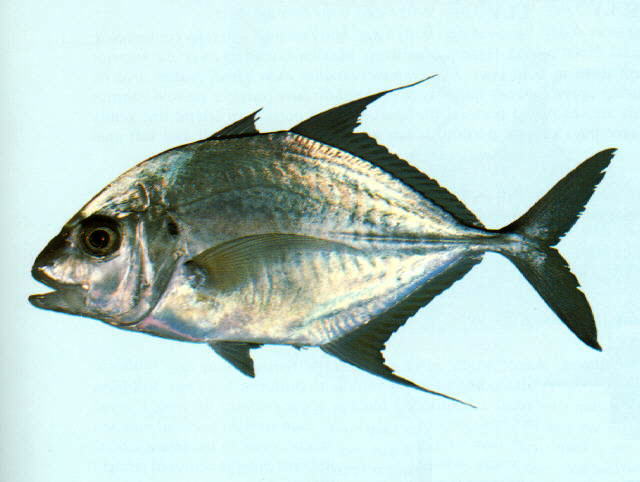| Carangidae (Jacks and pompanos), subfamily: Caranginae |
| 72 cm FL (male/unsexed); max.weight: 4,350.0 g |
|
reef-associated; depth range 30 - 60 m |
| Indo-Pacific: East Africa (Ref. 3287) to Fiji, north to Ryukyu Islands, south to New Zealand. |
|
Dorsal spines (total): 9-9; Dorsal soft rays (total): 18-20; Anal spines: 3-3; Anal soft rays: 14-17. Color silvery, greenish above. Opercle with black spot. 20-37 weak scutes. Pectoral fins falcate. Scaleless breast to behind pelvic origin and laterally to pectoral base. Soft dorsal lobe falcate in young, becoming shorter than head in adults. First 2 anal spines detached. |
| Adults inhabit open waters of coastal reefs (Ref. 9710). Juveniles occur in inshore areas, including estuaries (Ref. 3287). Usually in small groups (Ref. 48635). |
|
(Ref. 96402)
|
| harmless |
|
Source and more info: www.fishbase.org. For personal, classroom, and other internal use only. Not for publication.
Page created by Jen, 05.08.02,
php script by kbanasihan 06/09/2010 ,
last modified by
dsantos, 20/08/10

